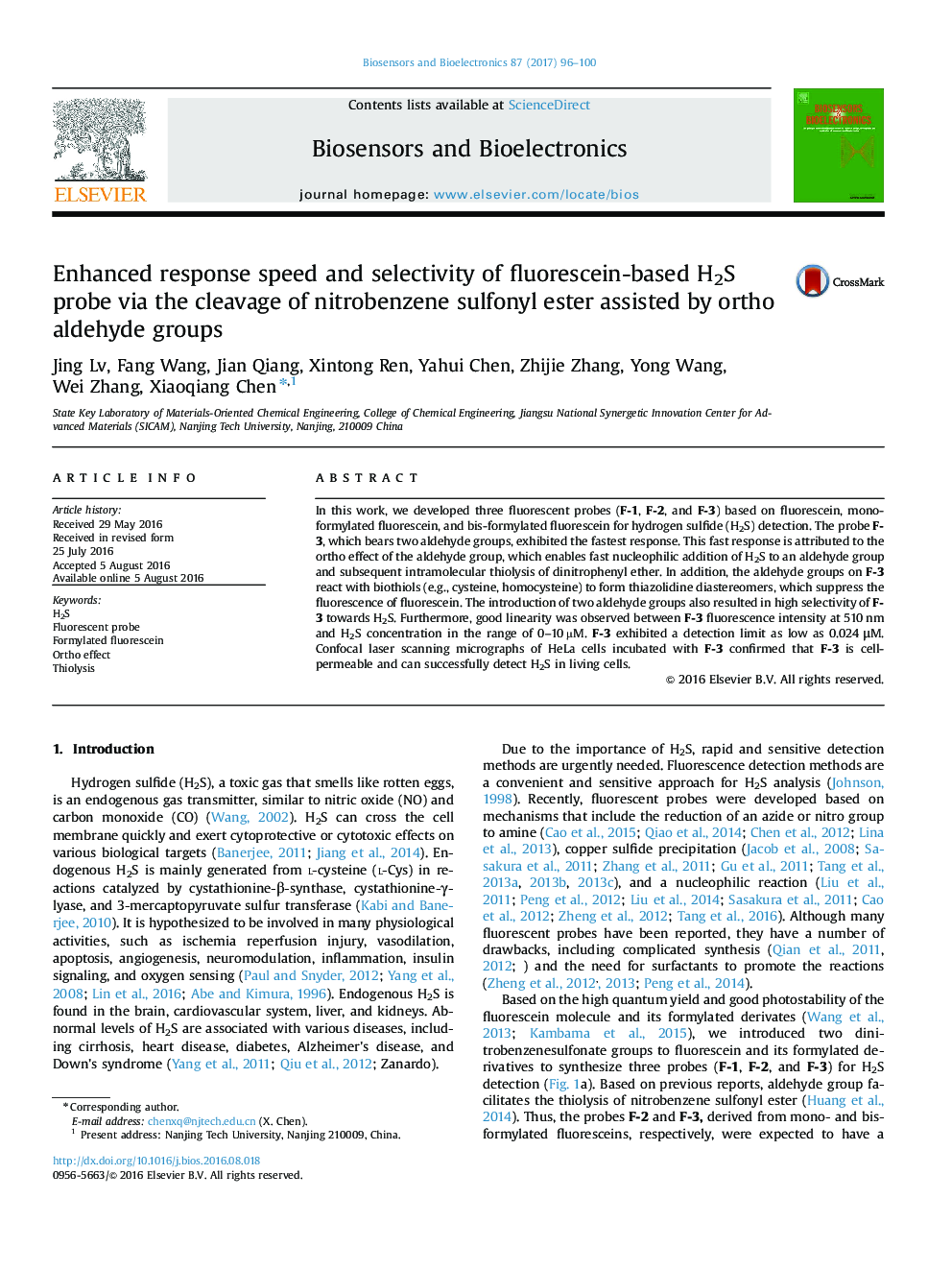| Article ID | Journal | Published Year | Pages | File Type |
|---|---|---|---|---|
| 866194 | Biosensors and Bioelectronics | 2017 | 5 Pages |
•Three fluorescein-based chemosensors for H2S were synthesized.•The ortho effect of aldehyde to the thiolysis reaction was learned.•Fluorescent probe bearing two aldehyde groups exhibited highest selective and sensitive response toward H2S.•The new compound was applied to monitoring H2S in Hela cells.
In this work, we developed three fluorescent probes (F-1, F-2, and F-3) based on fluorescein, mono-formylated fluorescein, and bis-formylated fluorescein for hydrogen sulfide (H2S) detection. The probe F-3, which bears two aldehyde groups, exhibited the fastest response. This fast response is attributed to the ortho effect of the aldehyde group, which enables fast nucleophilic addition of H2S to an aldehyde group and subsequent intramolecular thiolysis of dinitrophenyl ether. In addition, the aldehyde groups on F-3 react with biothiols (e.g., cysteine, homocysteine) to form thiazolidine diastereomers, which suppress the fluorescence of fluorescein. The introduction of two aldehyde groups also resulted in high selectivity of F-3 towards H2S. Furthermore, good linearity was observed between F-3 fluorescence intensity at 510 nm and H2S concentration in the range of 0–10 µM. F-3 exhibited a detection limit as low as 0.024 μM. Confocal laser scanning micrographs of HeLa cells incubated with F-3 confirmed that F-3 is cell-permeable and can successfully detect H2S in living cells.
Graphical abstractFigure optionsDownload full-size imageDownload as PowerPoint slide
